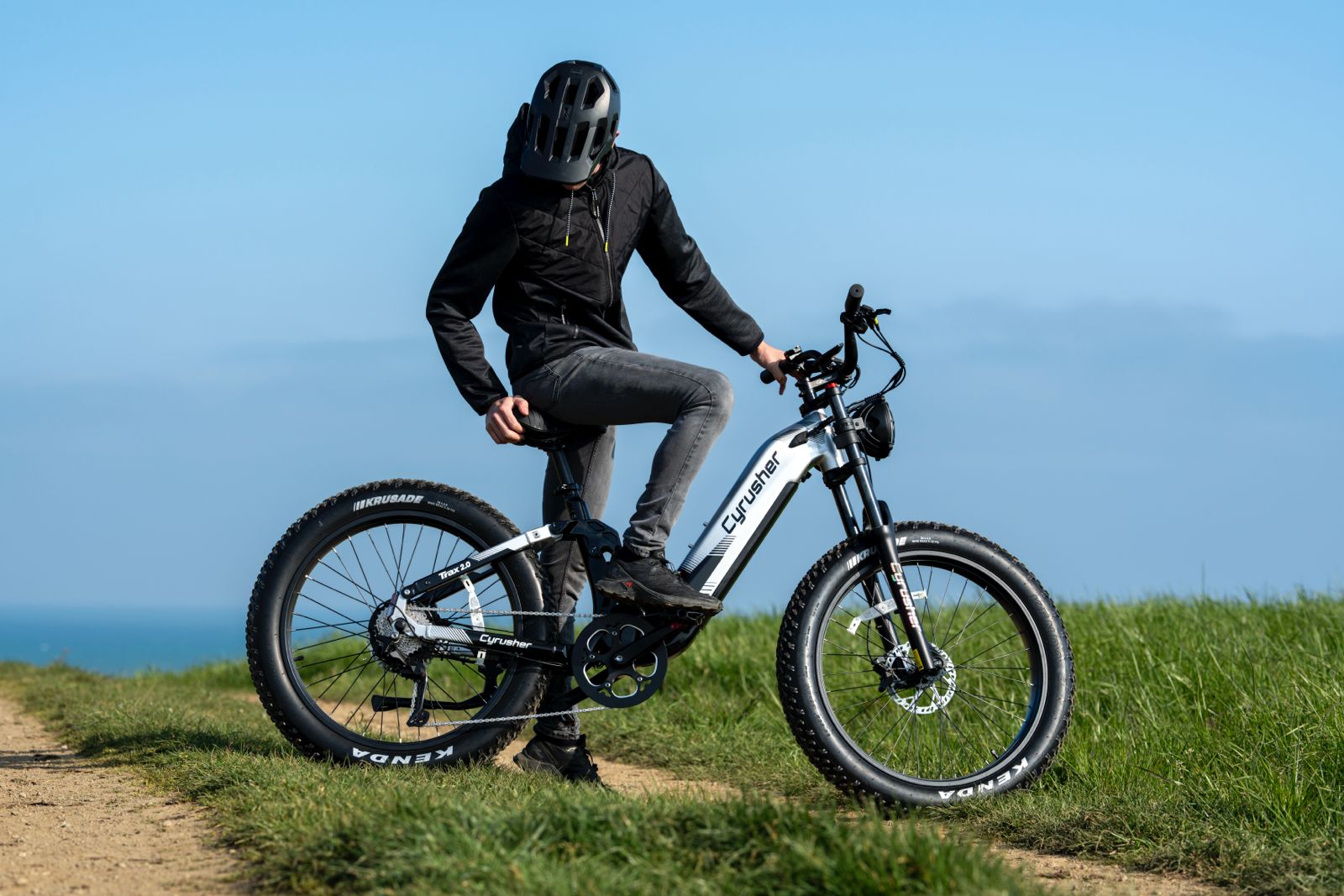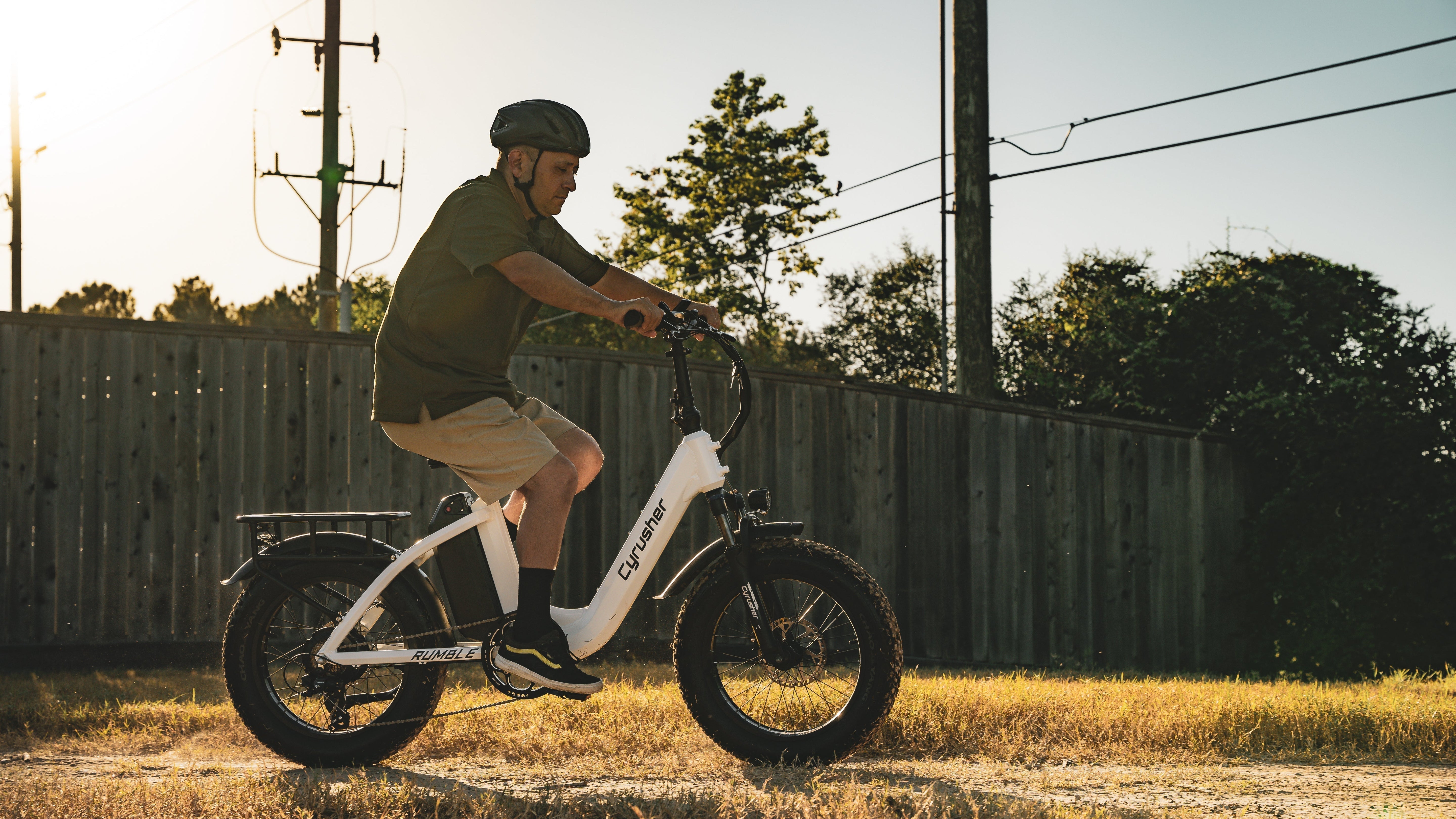Flat tyres are a common issue when riding regularly. A sudden tyre blowout can be very inconvenient and greatly hinder travel plans. Besides advising on the importance of keeping tyres in good condition to prevent flat tyre, learning how to fix tyres can help riders get back to the road quickly. This article offers a comprehensive guide on maintaining e-bike tyres and how to fix flat tyres effectively.
Before you can determine the cause of a puncture, it is essential to have a good grasp of the tread type. tyres are categorized into two main types based on the presence of inner tubes: inner tube tyres and tubeless tyres. Each type has distinct characteristics and necessitates different approaches for puncture repair.
Inner tube tyres
Inner tube tyres, as the name implies, typically feature an inner tube that maintains air pressure and keeps the tyre in place on the rim. These tyres have specific dimensions and must be inflated to the recommended tyre pressure. In the event of a flat tyre, the inner tube can be replaced to fix the tyre.
Tubeless tyres
Tubeless tyres, on the other hand, are designed without inner tubes. Sealant is commonly used to secure the tyre tread to the rim's edge.
What cause ebike flat tyre
- Sharp objects
Tyre blowouts often happen due to sharp objects on the road like nails, broken glass, and other debris commonly found at construction sites that can puncture the tyre tread.
- Riding terrain
Electric bicycles with enhanced performance can navigate mountainous terrains, making the riding surface more challenging. Riding frequently on rough roads with potholes, debris, and uneven surfaces can speed up tread wear, leading to potential flat tyre.
- Incorrect tyre pressure
Improper tyre pressure not only impacts riding performance but also raises the likelihood of a tyre blowout. The ideal tyre pressure varies depending on the type of road surface. Whether the tyres are overinflated or underinflated, either scenario can lead to flat tyre.

- Heat
Apart from terrain conditions, the tyre tread is influenced by the specific rubber compound used. Particularly in hot summer weather, high external temperatures can cause tyre pressure to increase. Moreover, prolonged friction during motion can overheat the tread, potentially resulting in flat tyre.
- Tyre valve issue
When the tyre valve malfunctions, it can result in a continuous leakage of tyre pressure, ultimately leading to a blowout.
- Inadequate sealant
In the case of tubeless tyres, ensuring there is enough sealant is crucial. Over time, sealant can dry up, increasing the risk of tyre blowouts. Therefore, it is essential to regularly check and top up the sealant to prevent such incidents.
How to avoid a flat tyre
Based on the factors that often cause electric bike flat tyre as mentioned above, it is clear to understand how to prevent them.
-
Regularly check the tread
Checking your tyre tread regularly is essential to prevent tyre blowouts. Rubber tyres naturally wear down over time, so it's important to inspect them routinely for any signs of damage, wear, or noticeable gaps. By promptly addressing any issues you find, you can prevent larger damage and potential flat tyre.
- Check tyre pressure regularly
Tyre pressure plays a significant role in riding experience. Different riding scenarios require specific tyre pressures. Adjust the tyre pressure based on the terrain and external temperature. For instance, cold winter temperatures can lead to compressed tyre pressure, while hot summer temperatures can cause tyre pressure to increase. Low pressure can result in excessive tyre softness and increased ground wear, while high pressure can reduce tread expansion and wear resistance. Both situations pose a risk of tyre blowout. Regularly checking and adjusting tyre pressure is essential for a safe and optimal riding experience.
Choosing puncture-resistant tyres can help decrease the likelihood of getting a flat tyre. Cyrusher electric bicycles are equipped with puncture-resistant fat tyres that all have inner tubes. If the inner tube gets damaged, it can be easily replaced, allowing the bicycle to be back in action promptly. Fat tyres are effective in absorbing the impact from obstacles on the road, thereby lowering the risk of tyre blowouts.

- Valve inspection
When adding air to tyres, always make sure to check if the valve is securely closed to prevent any air leaks. If you notice any valve damage, be sure to promptly repair or replace the valve.
- Ride ebike wisely
To prevent tyre blowouts on your e-bike, it's important to adopt sensible riding habits. Maintaining a consistent speed and minimizing gear shifts can help prolong the motor's lifespan. Stay alert while riding, be mindful of your surroundings, and steer clear of any visible road obstacles.
- Replenish sealant in time
To maintain the stability of tubeless tyres that rely on sealant for tread stability, it is important to regularly top up the sealant that may dry out over time. This will help ensure that the tyres remain stable and safe for use.
- Emergency preparedness
Ensure you have a set of spare repair tools readily available. In case of emergencies, having these tools on hand will allow you to perform simple repairs yourself and prevent being stuck.
How to fix a flat tyre
Accidents happen, and when a tyre blowout occurs while you're far from help, reach out to a nearby repair station or call a tow truck to move your vehicle. Alternatively, contact maintenance personnel for on-site assistance. Repairing a flat tyre is usually straightforward. Skilled riders can use pre-prepared tool kits to easily fix the issue and get back on the road quickly.
According to the variety of electric bicycles available, the majority are equipped with rear-mounted hub motors. These motors are situated in the rear wheel, making maintenance a bit more intricate. The following repair guide specifically targets electric bicycles with rear hub motors, offering riders a comprehensive repair outline.
Repairing a flat tyre can be broken down into four simple steps:
- Disassemble the tyreby releasing any fastenings and wires connected to it.
- Take out the damaged inner tube.
- Examine the tyrefor any harm and either repair or replace the inner tube.
- Reattach the wires and parts.
Preparation: To get ready for repairs, gather tools like a screwdriver, inflator, tyre levers, tube patching kit, wrench, crescent wrench, and scissors. For easier maintenance, lift the bike's tyres off the ground or adjust the front handlebars and seat before turning the ebike upside down.
Specific Repair Process:
- Begin by carefully removing the wires, screws, and other components near the tyrebefore proceeding to disassemble the inner tube. When disassembling, ensure that you do not tug on the wires. Remove the fixing screws and connected chains in a sequential order to keep the inner tube can be moved out.
- Gently extract the inner tube through the gap in the tyre. Maintain bike balance during disassembly to prevent damage to other components.
- To identify the puncture, you should inspect the tyre You can do this by gently pressing the tread or by inflating the tyreand listening attentively for any sounds of air escaping to pinpoint where the damage is located. Once you have identified the damaged area, mark it for easier repair later on. It is important to remember that when finding the damage, ensure that any objects responsible for causing the tyre puncture, such as nails, are promptly removed to prevent re-flat.
- Assess if the inner tube requires replacement outright. Inspect the size and position of the tyre If there is damage to the valve connection, the inner tube should be replaced. Minor damages can be fixed by applying patches without the need to replace the inner tube.
- Patch Repair Procedure: Begin by using sandpaper and cloth to clean and smooth the area around the puncture area. The size of the patch determines the extent of the smoothed area. After cleaning the smoothed surface, apply the patch to finalize the repair. Reinsert the inner tube into the tyreand follow the assembly process to complete the repair.
- If you need to replace the inner tube, simply remove it, insert the new inner tube into the tyre, and make sure it completely seeds inside. Inflating the tyrewill assist in securing the inner tube properly. Next, reassemble the screws and chain to finish the repair process.
After completing the repair, ensure that the chain, electrical connecting wires, and other components are installed properly to prevent any issues arising from mechanical or electrical problems during the repair process. Once reinstalled, inflate the tyre to the specified pressure to ensure proper positioning of the tyre tread and normal operation of all components before riding. If you are not confident in your technical abilities, proceed with caution and seek guidance from a technical expert to prevent damage to other power components and avoid impacting the functionality of the electric bicycle.

Conclusion
A flat tyre is a common issue when riding electric bicycles. By taking preventive measures and learning how to repair them, you can effectively handle such situations. This will help you get back on the road quickly and enjoy your cycling journey without interruptions. It is important for all riders to minimize tyre punctures and feel more at ease when using e-bikes for new adventures.










Share:
Cyrusher Rider Story: The Ticket to Reigniting Your Love for Cycling
Is an Electric Bike Good for Daily Use?